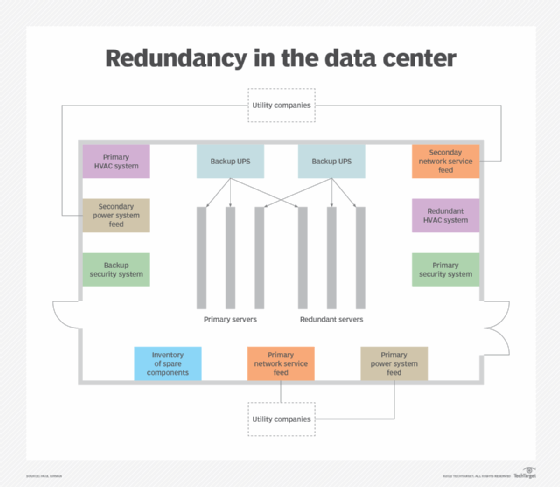Discussed: If a Company Goes Bust Who Pays Redundancy in the UK?
Discussed: If a Company Goes Bust Who Pays Redundancy in the UK?
Blog Article
Investigating the Interaction In Between Business Redundancy and Organizational Adaptability for Future Development
In the vibrant landscape of today's business world, the elaborate partnership between firm redundancy and organizational flexibility becomes a critical factor for continual growth and success. Companies commonly encounter the difficulty of striking a delicate equilibrium in between preserving a degree of redundancy to minimize risks and fostering adaptability to respond quickly to the ever-evolving market needs. This fragile interplay holds the key to not only enduring in rough times yet likewise thriving despite uncertainty. As we discover the multifaceted measurements of this interplay, appealing understandings into how companies navigate these complexities to lead the way for future growth wait for.
Relevance of Firm Redundancy
Business redundancy is an important component that improves organizational durability and mitigates functional threats. By incorporating redundancy actions within the organizational framework, firms can better hold up against unanticipated interruptions and changes in the organization atmosphere. Redundancy functions as a calculated buffer, enabling business to adapt and react properly to unforeseen obstacles without jeopardizing important procedures.
One key facet of the significance of firm redundancy is its function in making certain continuity throughout times of dilemma. When faced with abrupt adjustments or emergency situations, repetitive systems, resources, or employees can action in to maintain crucial functions and avoid extensive disruptions. This connection not only safeguards the company's reputation and consumer trust yet additionally reduces financial losses and functional downtime.

Approaches for Business Flexibility

An additional important approach is spending in technology and facilities that can sustain adaptability and scalability. Executing digital tools, automation, and information analytics can simplify procedures, boost performance, and provide important insights for informed decision-making. Furthermore, producing adaptable organizational frameworks that enable for quick modifications to market dynamics and customer needs is important for staying competitive in a rapidly evolving environment. By proactively identifying potential disruptions and possibilities, companies can proactively adjust and prosper in an ever-changing company landscape.
Balancing Redundancy and Flexibility
Achieving a harmonious stability between functional redundancy and business flexibility is vital in browsing the intricacies of a dynamic service setting. Striking the right balance between redundancy and versatility is a fragile procedure that needs a deep understanding of the company's objectives, industry dynamics, and risk tolerance.
To attain this equilibrium, firms require to conduct regular assessments of their procedures to recognize locations where redundancy is essential for threat reduction and where versatility can drive technology and development. Carrying out adaptable frameworks, cultivating a society of constant knowing and improvement, and encouraging open interaction throughout all degrees of the organization are key strategies to harmonize redundancy and flexibility properly. By lining up these two crucial elements, firms can place themselves for sustainable growth and success in an ever-changing business landscape.
Instance Researches on Adjustment Success
In checking out circumstances of successful business adaptation, it becomes noticeable that the interaction between functional redundancy and versatility is a defining variable in shaping resilient businesses. One engaging case research is that of Netflix. At first a DVD rental solution, Netflix demonstrated remarkable flexibility by transitioning into a streaming system when digitalization interrupted the industry. By read the article purposefully buying technology and material creation, Netflix not just grew however endured in a quickly advancing market. One more standout example is Amazon. Beginning as an online bookstore, Amazon continually adapted its organization model, increasing into diverse fields such as cloud computing and man-made intelligence. This versatility permitted Amazon to stay ahead of rivals and meet altering consumer demands. Finally, Adobe gives a noteworthy picture of effective adjustment. The business shifted from marketing software licenses to a subscription-based design, guaranteeing recurring profits streams and enhanced client interaction. These study emphasize the importance of functional redundancy paired with organizational versatility in promoting lasting development and competition.
Building Resilience for Future Growth
Structure strength for future development needs a critical placement of functional processes with market dynamics and emerging fads. Companies have to adjust to altering environments by fostering a society of flexibility, development, and continuous renovation. Durability includes not only jumping back from obstacles however also proactively planning for future obstacles. One essential aspect of structure strength is buying robust danger management strategies to alleviate prospective disruptions. This consists of scenario preparation, branching out supply chains, and developing backup plans for numerous contingencies (who pays redundancy money).
Furthermore, cultivating strong partnerships with stakeholders, such as clients, staff members, providers, and the community, is important for keeping and weathering uncertainties trust fund and support during stormy times. Efficient interaction and transparency play an essential function in structure strength, as they help line up expectations and assist in collaboration in browsing unpredictabilities.
Furthermore, organizations need to prioritize discovering and development initiatives to upskill employees and equip them with the required tools to adapt to changing scenarios. By investing in their labor force, business can boost their flexibility and dexterity, ultimately strengthening their resilience for sustainable future development.
Verdict

In the vibrant landscape of today's service globe, the intricate connection between business redundancy and organizational flexibility emerges as a critical element for continual development and success. Companies typically encounter the challenge of striking a delicate equilibrium in between keeping a level of redundancy to reduce threats and cultivating adaptability to respond quickly to the ever-evolving market needs.To attain this equilibrium, companies need to visit homepage carry out routine analyses of their operations to identify areas where redundancy is required for danger reduction and where flexibility can drive technology and development.In conclusion, the interplay between company redundancy and organizational versatility is important for future development. Structure durability via Clicking Here a mix of redundancy and adaptability will certainly ensure that companies are prepared for the challenges of the future.
Report this page